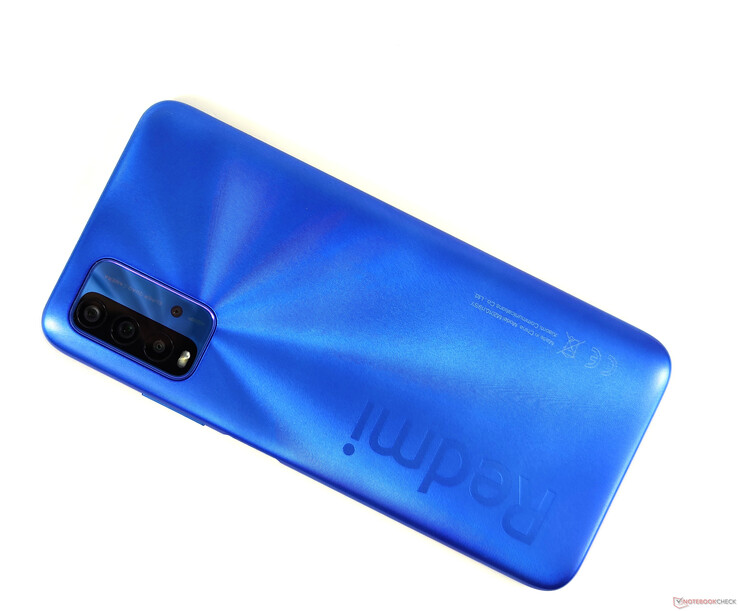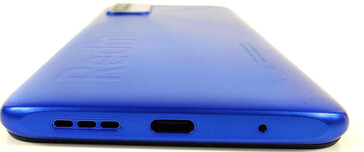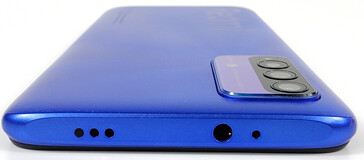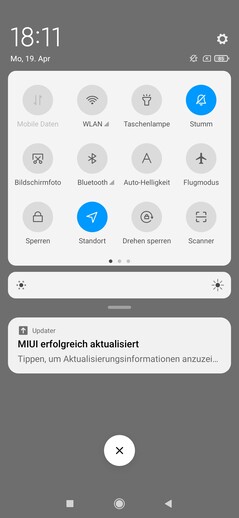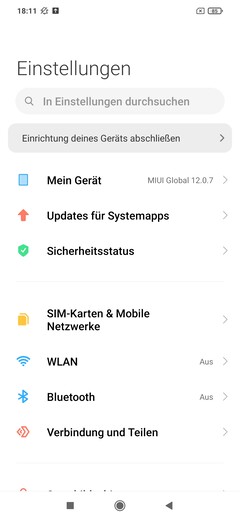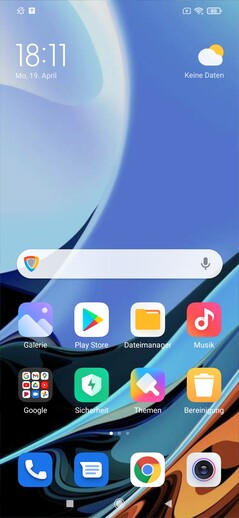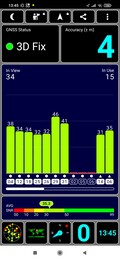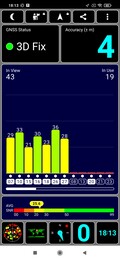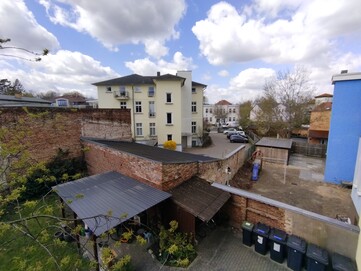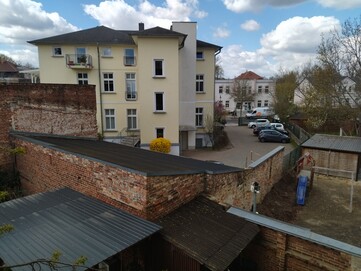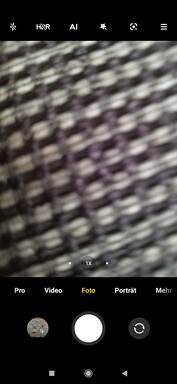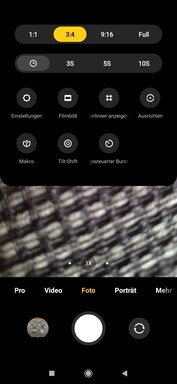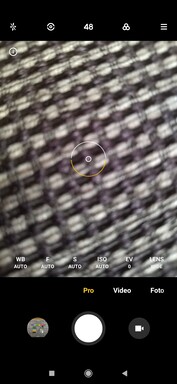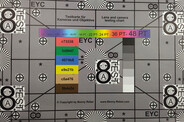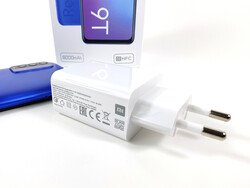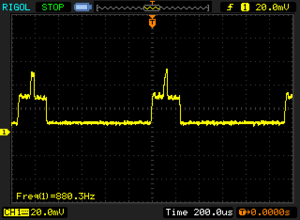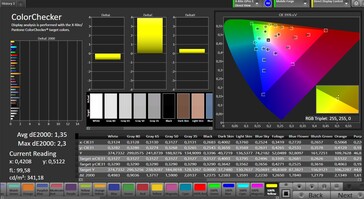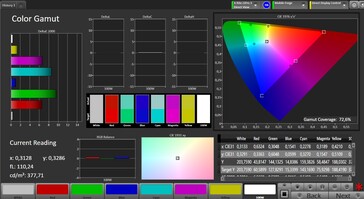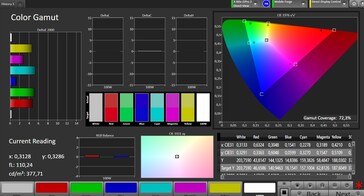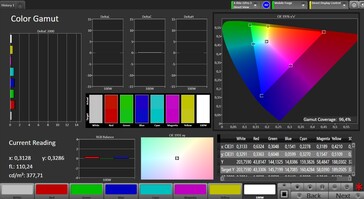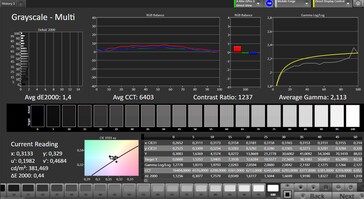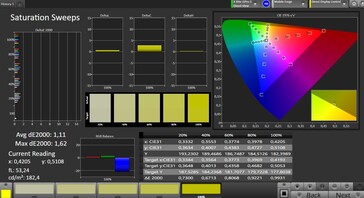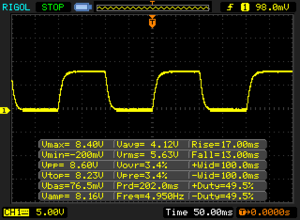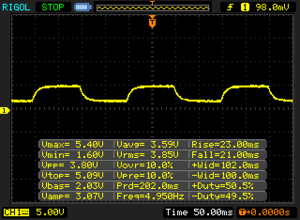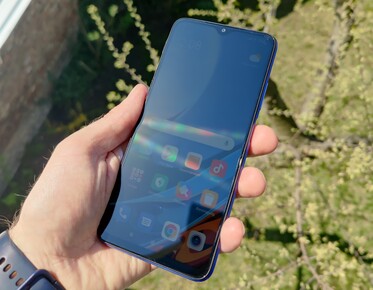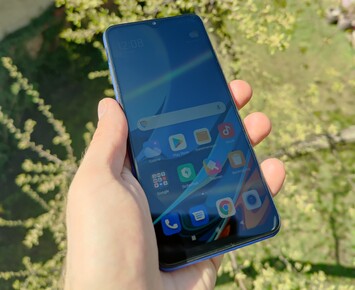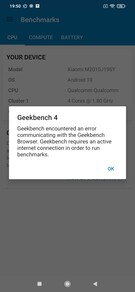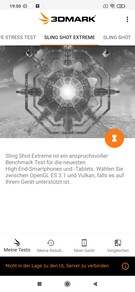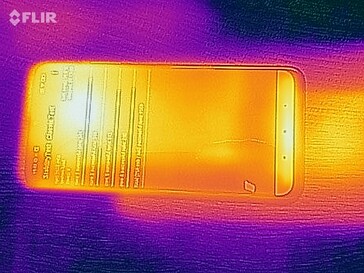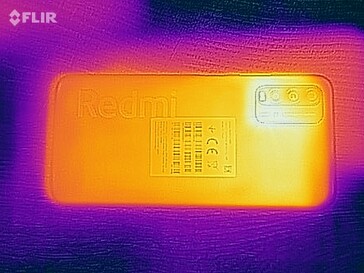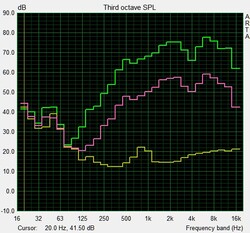Xiaomi Redmi 9T review: Entry-level smartphone with huge battery, NFC, and stereo sound
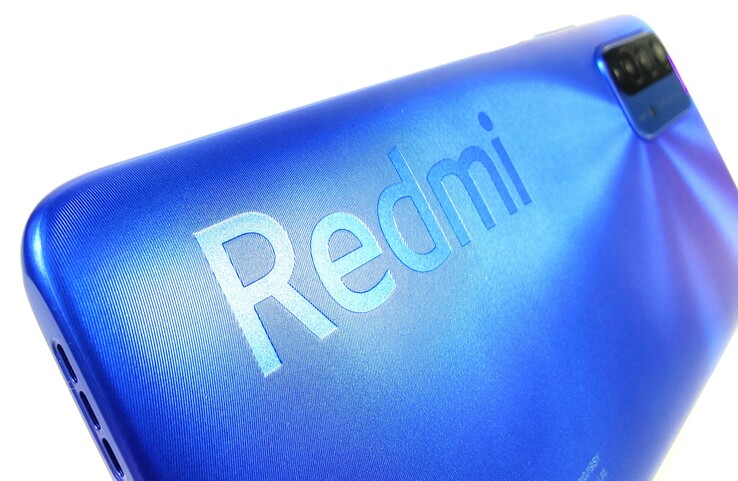
The diversity of models in the Redmi 9 series doesn't seem to have an end. Like its sibling models Redmi 9, Redmi 9A, and Redmi 9AT, the newest member, the Redmi 9T, is a very affordable smartphone that offers very appealing technical specifications for this price range. For example, the Xiaomi phone has a 6,000 mAh battery, stereo speakers, NFC, a Full HD+ IPS display, and a 48 MP main camera. The following configurations of the Redmi 9T are available:
I. 64 GB storage / 4 GB RAM: 170 Euros (~$204) (MSRP)
II. 128 GB storage / 4 GB RAM: 200 Euros (~$240) (MSRP)
Unlike the Note 9T, the cheaper Redmi 9T doesn't support 5G; it can only access mobile Internet via the LTE standard instead. Due to the use of the Qualcomm Snapdragon 662, performance also falls significantly behind that of the Note 9T 5G.
Possible contenders in comparison
Rating | Date | Model | Weight | Drive | Size | Resolution | Price |
|---|---|---|---|---|---|---|---|
| 78.9 % v7 (old) | 05 / 2021 | Xiaomi Redmi 9T SD 662, Adreno 610 | 198 g | 128 GB UFS 2.2 Flash | 6.53" | 2340x1080 | |
| 78 % v7 (old) | 01 / 2021 | Xiaomi Poco M3 SD 662, Adreno 610 | 198 g | 128 GB UFS 2.2 Flash | 6.53" | 2340x1080 | |
| 77.3 % v7 (old) | 04 / 2021 | Motorola Moto G10 SD 460, Adreno 610 | 200 g | 64 GB eMMC Flash | 6.50" | 1600x720 | |
| 76.4 % v7 (old) | 08 / 2020 | Samsung Galaxy A21s Exynos 850, Mali-G52 MP1 | 192 g | 32 GB eMMC Flash | 6.50" | 1600x720 | |
| 79.7 % v7 (old) | 02 / 2021 | Xiaomi Redmi Note 9T 5G Dimensity 800U, Mali-G57 MP3 | 199 g | 128 GB UFS 2.2 Flash | 6.53" | 2340x1080 |
Case - Redmi 9T with notch
Prospective buyers of the Xiaomi phone can choose between Twilight Blue, Sunrise Orange, Ocean Green, and Carbon Gray. It's common for the design aspect to be debatable, but we are a bit conflicted about the look of our blue variant, which features a distinctive 9T series logo. On one hand, we like the grooved and consequently fingerprint-resistant texture of the plastic back, but on the other hand, the engraved lettering, which we're already familiar with from the realme 8 Pro, takes a bit of getting used to.
However, no "acclimatization" is necessary in terms of stability and workmanship, which are at a very decent level in the Xiaomi smartphone. The built-in volume control buttons also sit relatively firmly in the frame, and the same applies to the power button with the integrated fingerprint sensor, which is often a bit wobbly in smartphones. In addition, the Redmi 9T's case features a nano-coating that protects it from splashing water - but an official IP certification is not available.
The front of the Redmi 9T is made of a scratch-resistant third-generation Gorilla Glass display that is flush with the plastic frame. The 6.53-inch IPS display is surrounded by a moderate bezel on the sides. However, the tall bezel below the display only leads to an average screen-to-body ratio of about 83%.
Connectivity - Xiaomi smartphone with 3.5 mm audio jack
The Redmi 9T's feature list includes an FM radio, a triple card slot so that the dual-SIM function can be used independently of the dedicated SD card slot, a 3.5 mm audio jack, and an IR blaster as well as Miracast.
The internal UFS storage has a capacity of 128 GB in our review sample, where 21 GB is already occupied by the system out of the box. The 6,000 mAh battery is charged at up to 18 watts via the USB-C 2.0 port at the bottom of the case, and the Redmi smartphone can also be used as a power bank. USB OTG is also supported, so memory sticks can easily be connected to the Redmi 9T, for example.
Software - Xiaomi phone with MIUI 12
Google's Android version 10 is used as the operating system. At the time of testing, the manufacturer's in-house MIUI 12.0.07 user interface with security patches from March 2021 is installed on top.
The MIUI 12 user interface offers a lot of customization options and a well-optimized system interface. With the separate notification center, the app switcher, and the design of the control center, it's very reminiscent of Apple's iOS, but that isn't a negative thing.
However, what slightly degrades the MIUI 12 interface in budget Redmi models are the short advertisements that appear as soon as an app is installed - nevertheless, we didn't discover more of these banner ads. The large number of third-party apps is also noticeable, but these can be completely uninstalled.
Communication and GNSS - Redmi phone with NFC
Unlike the Redmi Note 9T, the "normal" 9T can only access LTE networks; a 5G modem for fast on-the-go Internet is not on board. The price range of the Xiaomi smartphone is also reflected in the number of supported LTE frequencies - access to a total of 12 LTE bands is supported. Nevertheless, all relevant frequencies are covered for the German-speaking regions.
The Redmi phone's WLAN module supports the IEEE 802.11a/b/g/n/ac standard, so the 9T model can be used within the 2.4 GHz and 5.0 GHz frequency bands, and the transfer rates in our Wi-Fi test are correspondingly solid. In combination with our Netgear Nighthawk AX12 reference router, we determine transfer rates of about 300 Mb/s, which is fine for a smartphone in this price range.
Besides "real" dual SIM, the Chinese manufacturer supports Bluetooth 5.0 in terms of communication modules. An NFC chip for near-field communication and contactless payments is also on board.
| Networking | |
| iperf3 transmit AX12 | |
| Xiaomi Redmi Note 9T 5G | |
| Samsung Galaxy A21s | |
| Xiaomi Redmi 9T | |
| Xiaomi Poco M3 | |
| Motorola Moto G10 | |
| iperf3 receive AX12 | |
| Xiaomi Redmi Note 9T 5G | |
| Samsung Galaxy A21s | |
| Xiaomi Poco M3 | |
| Xiaomi Redmi 9T | |
| Motorola Moto G10 | |
The device's position is determined by means of the following main satellite systems: GPS, GLONASS, Galileo, and BeiDou. The satellite fix is obtained quickly outdoors and with an accuracy of about 4 meters. Even indoors, the Redmi 9T is able to determine its position quite fast.
In order to be able to assess the positioning accuracy of our test device in practice, we track a route with the Garmin Edge 520 GPS bike computer in parallel for comparison purposes. At 40 meters, the deviations are low, and the GPS log's detailed trajectory is also convincing with its accurate positioning; consequently, nothing stands in the way of using the Redmi 9T for navigation purposes.
Telephone and call quality - Redmi 9T with Wi-Fi calling
The Redmi 9T offers decent call quality. The two built-in microphones provide satisfactory intelligibility in the test. Video calls using the built-in front-facing camera also work smoothly.
The Xiaomi phone supports dual SIM with two physical SIM cards. Phone calls via Wi-Fi are supported, but we couldn't find an option for VoLTE in the settings menus.
Cameras - Xiaomi phone with quad-camera setup
At the front, an 8 MP camera is integrated into the display's notch; it produces somewhat soft-looking selfies with little dynamic range, but the results are absolutely acceptable for Instagram and the like.
Despite the low price, the Redmi 9T has four camera lenses at the back. The quad-camera module consists of a 48 MP main camera with an maximum aperture of f/1.79. The Xiaomi smartphone label hasn't revealed the exact model of the image sensor, but it's allegedly the Samsung GM1, which is also supposed to be installed in the Poco M3. The sensor supports pixel-binning, so that every 2x2 adjacent pixels can be merged into one large pixel.
The quad-pixel technology of the main camera provides 12 MP photos by default, but the photo results are only convincing to a limited extent. The pictures have little dynamic range; they're also relatively dark and blurry. Up to an 8x digital magnification is possible. With increasing darkness, photos tend to suffer more from image noise and strong blurriness.
In addition to the 48 MP main camera and the two 2 MP sensors for macro and bokeh effects, the Redmi 9T has an 8 MP ultra wide-angle camera. Usable results can be achieved with the ultra wide-angle lens when there's a lot of light, but some compromises have to be made in terms of image sharpness and details compared to the main camera. As with other low-priced phones, this is a nice addition, but the ultra wide-angle lens is only suitable for the odd snapshot in terms of quality.
Videos can only be recorded in Full HD and at 30 fps with all cameras, similar to the Redmi 9. A stepless transition when using the ultra wide-angle and standard lenses to zoom is not possible.
Image comparison
Choose a scene and navigate within the first image. One click changes the position on touchscreens. One click on the zoomed-in image opens the original in a new window. The first image shows the scaled photograph of the test device.
Main cameraMain cameraWide angleLow lightWe subject the rear-facing 48 MP camera to further tests under controlled lighting conditions. We use the ColorChecker Passport tool to analyze the camera's color reproduction in comparison to the actual reference colors. We take measurements once in full studio lighting and once at 1 lux of light intensity.
Colors are reproduced surprisingly well with the Redmi 9T. White balance could be better, and black and gray tones are not quite right, but no real weaknesses are apparent. Compared with the reference colors, the smartphone shows colors in a brighter way as is typical for smartphones, but the Delta E deviations are low for this price range.
The image sharpness in our test chart isn't very pronounced at the edges, but structures and transitions are easily recognizable at the center of the image.
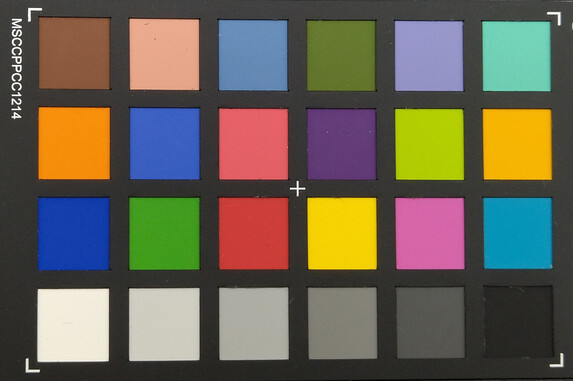
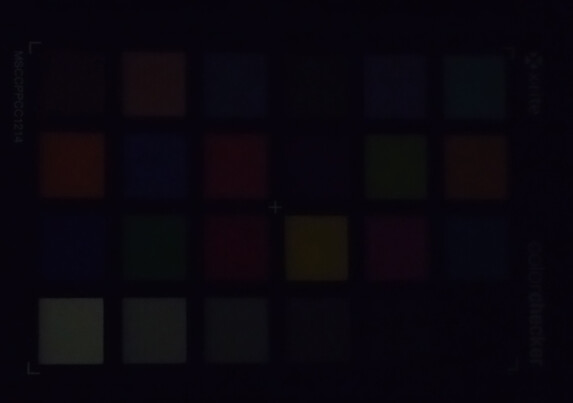
Accessories and warranty - Redmi 9T with case included
The box contains a modular power adapter with a rated output of 22.5 watts, a USB charging cable, and a silicon case. There's also a factory-preinstalled protective film.
Xiaomi offers a 12-month warranty period with its smartphone.
Input devices and handling - Xiaomi phone with fingerprint scanner
The 6.53-inch LC display accurately responds to inputs all the way to the touchscreen's corners. However, the affordable Redmi phone doesn't offer a refresh rate beyond 60 Hz like the Moto G30.
An active fingerprint sensor is integrated into the power button. The biometric fingerprint recognition is reliable, but the sensor's speed leaves much room for improvement. It takes a good second to think before the screen is woken up from standby mode.
Another way to unlock the device is 2D face recognition using the front-facing camera. The recognition rates are convincing, but this type of unlocking is quite unsafe.
Display - Redmi phone with IPS panel
The 6.53-inch 60 Hz LC display has an aspect ratio of 19.5:9 with 2340x1080 pixels and a pixel density of just under 400 PPI. Xiaomi uses pulse width modulation to control the display brightness at levels below 25%.
For an entry-level phone, the maximum brightness with a completely white screen background is a satisfactory 467 cd/m², which isn't very much in absolute terms, but it's above the manufacturer's specifications (400 nits). The Redmi Note 9T counterpart has a higher brightness than the 9T, and it's also much more homogeneous.
In addition, we test the display's brightness with an evenly distributed ratio of dark to bright areas (APL50). We determined a maximum brightness of 486 cd/m² here.
| |||||||||||||||||||||||||
Brightness Distribution: 83 %
Center on Battery: 456 cd/m²
Contrast: 1868:1 (Black: 0.25 cd/m²)
ΔE ColorChecker Calman: 1.35 | ∀{0.5-29.43 Ø4.78}
ΔE Greyscale Calman: 1.4 | ∀{0.09-98 Ø5}
96.4% sRGB (Calman 2D)
Gamma: 2.113
CCT: 6403 K
| Xiaomi Redmi 9T IPS LCD, 2340x1080, 6.5" | Xiaomi Poco M3 IPS, 2340x1080, 6.5" | Motorola Moto G10 IPS, 1600x720, 6.5" | Samsung Galaxy A21s PLS, 1600x720, 6.5" | Xiaomi Redmi Note 9T 5G IPS, 2340x1080, 6.5" | |
|---|---|---|---|---|---|
| Screen | -13% | -84% | -146% | -89% | |
| Brightness middle (cd/m²) | 467 | 465 0% | 359 -23% | 540 16% | 572 22% |
| Brightness (cd/m²) | 425 | 428 1% | 347 -18% | 509 20% | 540 27% |
| Brightness Distribution (%) | 83 | 89 7% | 95 14% | 91 10% | 90 8% |
| Black Level * (cd/m²) | 0.25 | 0.21 16% | 0.18 28% | 0.36 -44% | 0.42 -68% |
| Contrast (:1) | 1868 | 2214 19% | 1994 7% | 1500 -20% | 1362 -27% |
| Colorchecker dE 2000 * | 1.35 | 1.7 -26% | 4.89 -262% | 6.58 -387% | 4.1 -204% |
| Colorchecker dE 2000 max. * | 2.3 | 3.5 -52% | 8.13 -253% | 11.55 -402% | 11.2 -387% |
| Greyscale dE 2000 * | 1.4 | 2.4 -71% | 3.7 -164% | 6.4 -357% | 2.5 -79% |
| Gamma | 2.113 104% | 2.16 102% | 2.292 96% | 2.206 100% | 2.24 98% |
| CCT | 6403 102% | 6664 98% | 7462 87% | 8482 77% | 6525 100% |
* ... smaller is better
Screen Flickering / PWM (Pulse-Width Modulation)
| Screen flickering / PWM detected | 880 Hz | ≤ 25 % brightness setting | |
The display backlight flickers at 880 Hz (worst case, e.g., utilizing PWM) Flickering detected at a brightness setting of 25 % and below. There should be no flickering or PWM above this brightness setting. The frequency of 880 Hz is quite high, so most users sensitive to PWM should not notice any flickering. In comparison: 53 % of all tested devices do not use PWM to dim the display. If PWM was detected, an average of 8101 (minimum: 5 - maximum: 343500) Hz was measured. | |||
Considering that this is a low-priced smartphone, the analysis performed with the spectrophotometer and the CalMAN software reveals very low average Delta E deviations from the sRGB color space of 1.35 (colors) and 1.4 (grayscales), respectively. The color temperature is very well tuned at around 6,400 K.
In comparison with the IPS competition, the LC display of the Redmi 9T has a very satisfactory black level of 0.25 cd/m². Thanks to the solid brightness, the IPS panel is also able to achieve a good contrast ratio.
Display Response Times
| ↔ Response Time Black to White | ||
|---|---|---|
| 30 ms ... rise ↗ and fall ↘ combined | ↗ 17 ms rise | |
| ↘ 13 ms fall | ||
| The screen shows slow response rates in our tests and will be unsatisfactory for gamers. In comparison, all tested devices range from 0.1 (minimum) to 240 (maximum) ms. » 79 % of all devices are better. This means that the measured response time is worse than the average of all tested devices (20.2 ms). | ||
| ↔ Response Time 50% Grey to 80% Grey | ||
| 44 ms ... rise ↗ and fall ↘ combined | ↗ 23 ms rise | |
| ↘ 21 ms fall | ||
| The screen shows slow response rates in our tests and will be unsatisfactory for gamers. In comparison, all tested devices range from 0.165 (minimum) to 636 (maximum) ms. » 73 % of all devices are better. This means that the measured response time is worse than the average of all tested devices (31.6 ms). | ||
Performance - Xiaomi phone with Snapdragon SoC
The Qualcomm Snapdragon 662 is manufactured in an 11 nm process, and it has a Kryo 260 CPU unit. Four Cortex-A73 cores run at up to 2 GHz, and the remaining Cortex-A53 cores run at a clock rate of 1.8 GHz. The Qualcomm Adreno 610 is used as the graphics unit.
The system often runs smoothly with our 4 GB version, but we constantly had to cope with brief stutters. Scrolling is a bit choppy in complex websites in particular. Application loading times are neither especially fast nor especially slow due to the UFS 2.2 storage. It should be noted that the 64 GB version comes with UFS 2.1 storage and should consequently be a bit slower.
We normally get a more accurate impression of the SoC by means of a comprehensive benchmark package. However, tests like GFXBench or 3DMark cause problems under the Redmi 9T's current MIUI 12 software. Some Xiaomi models apparently have a firmware lock that prevents benchmarks from establishing network connections. In our case, the Redmi 9T is connected to the Internet, but the firmware lock prevents the benchmark from connecting to the servers to download benchmark files and device list updates. The Redmi phone's performance in benchmarks should be roughly on par with that of the Poco M3.
| UL Procyon AI Inference for Android - Overall Score NNAPI (sort by value) | |
| Xiaomi Redmi 9T | |
| Xiaomi Redmi Note 9T 5G | |
| Average Qualcomm Snapdragon 662 (3674 - 4708, n=2) | |
| Average of class Smartphone (3769 - 81594, n=135, last 2 years) | |
| AnTuTu v8 - Total Score (sort by value) | |
| Xiaomi Redmi 9T | |
| Xiaomi Poco M3 | |
| Motorola Moto G10 | |
| Samsung Galaxy A21s | |
| Xiaomi Redmi Note 9T 5G | |
| Average Qualcomm Snapdragon 662 (167471 - 185542, n=9) | |
| Jetstream 2 - 2.0 Total Score | |
| Average of class Smartphone (23.8 - 387, n=149, last 2 years) | |
| Xiaomi Redmi Note 9T 5G (Chrome 88.0.4324.93) | |
| Xiaomi Poco M3 (Chrome 87.0.4280.101) | |
| Average Qualcomm Snapdragon 662 (30.4 - 32.4, n=10) | |
| Xiaomi Redmi 9T (Chrome89) | |
| Xiaomi Redmi Note 9 (Chrome 85) | |
| Samsung Galaxy A21s (Chrome 84) | |
| JetStream 1.1 - Total Score | |
| Xiaomi Redmi Note 9T 5G (Chrome 88.0.4324.93) | |
| Xiaomi Redmi Note 9 (Chrome 85) | |
| Average Qualcomm Snapdragon 662 (47.8 - 53.7, n=9) | |
| Xiaomi Redmi 9T (Chrome89) | |
| Xiaomi Poco M3 (Chrome 87.0.4280.101) | |
| Motorola Moto G10 (Chrome 89) | |
| Samsung Galaxy A21s (Chrome 84) | |
| Speedometer 2.0 - Result 2.0 | |
| Average of class Smartphone (15.2 - 643, n=122, last 2 years) | |
| Xiaomi Redmi Note 9T 5G (Chrome 88.0.4324.93) | |
| Xiaomi Poco M3 (Chrome 87.0.4280.101) | |
| Xiaomi Redmi 9T (Chrome89) | |
| Average Qualcomm Snapdragon 662 (26.5 - 29.3, n=9) | |
| Xiaomi Redmi Note 9 (Chrome 85) | |
| Motorola Moto G10 (Chome 89) | |
| Samsung Galaxy A21s (Chome 84) | |
| WebXPRT 3 - Overall | |
| Average of class Smartphone (38 - 380, n=31, last 2 years) | |
| Average Qualcomm Snapdragon 662 (51 - 59, n=11) | |
| Xiaomi Poco M3 (Chrome 87.0.4280.101) | |
| Xiaomi Redmi 9T (Chrome89) | |
| Xiaomi Redmi Note 9T 5G (Chrome 88.0.4324.93) | |
| Xiaomi Redmi Note 9 (Chrome 85) | |
| Motorola Moto G10 (Chrome 89) | |
| Samsung Galaxy A21s (Chrome 84) | |
| Octane V2 - Total Score | |
| Average of class Smartphone (2228 - 121337, n=197, last 2 years) | |
| Xiaomi Redmi Note 9T 5G (Chrome 88.0.4324.93) | |
| Xiaomi Redmi Note 9 (Chrome 85) | |
| Xiaomi Redmi 9T (Chrome89) | |
| Average Qualcomm Snapdragon 662 (8893 - 10247, n=14) | |
| Xiaomi Poco M3 (Chrome 87.0.4280.101) | |
| Motorola Moto G10 (Chrome 89) | |
| Samsung Galaxy A21s (Chrome 84) | |
| Mozilla Kraken 1.1 - Total | |
| Samsung Galaxy A21s (Chrome 84) | |
| Motorola Moto G10 (Chrome 89) | |
| Xiaomi Redmi 9T (Chrome89) | |
| Xiaomi Poco M3 (Chrome 87.0.4280.101) | |
| Average Qualcomm Snapdragon 662 (3779 - 4650, n=11) | |
| Xiaomi Redmi Note 9 (Chrome 85) | |
| Xiaomi Redmi Note 9T 5G (Chrome 88.0.4324.93) | |
| Average of class Smartphone (257 - 28190, n=154, last 2 years) | |
* ... smaller is better
| Xiaomi Redmi 9T | Xiaomi Poco M3 | Motorola Moto G10 | Samsung Galaxy A21s | Xiaomi Redmi Note 9T 5G | Average 128 GB UFS 2.2 Flash | Average of class Smartphone | |
|---|---|---|---|---|---|---|---|
| AndroBench 3-5 | 16% | -1% | -21% | 52% | 49% | 323% | |
| Sequential Read 256KB (MB/s) | 503 | 509 1% | 295.9 -41% | 307 -39% | 913 82% | 736 ? 46% | 2228 ? 343% |
| Sequential Write 256KB (MB/s) | 252.2 | 269.2 7% | 172.4 -32% | 104.3 -59% | 483.5 92% | 532 ? 111% | 1852 ? 634% |
| Random Read 4KB (MB/s) | 104.5 | 147 41% | 123 18% | 77.2 -26% | 171.1 64% | 193 ? 85% | 296 ? 183% |
| Random Write 4KB (MB/s) | 145.9 | 154.1 6% | 64.5 -56% | 89.5 -39% | 197 35% | 186.3 ? 28% | 339 ? 132% |
| Sequential Read 256KB SDCard (MB/s) | 77.2 ? | 85.9 ? 11% | 107.6 ? 39% | 80 ? 4% | 83.8 ? 9% | 82.3 ? 7% | |
| Sequential Write 256KB SDCard (MB/s) | 49.6 ? | 64.2 ? 29% | 83.3 ? 68% | 66.4 ? 34% | 63.6 ? 28% | 59.1 ? 19% |
Games - Gaming with the Redmi 9T
We look at the gaming performance with the app from our partner GameBench. Playing PUBG Mobile on the Redmi 9T is only possible at very low graphics settings, and we weren't able to get frame rates above 30 fps out of the Redmi phone either. Even the Armajet shooter, which theoretically supports frame rates of 144 Hz, is only playable at an average of 38 fps, but strong drops (<20 fps) have to be tolerated here as well.
The games that we tested run without issues on the Redmi 9T, and there's nothing to complain about in terms of controls and sound either.
Emissions - Xiaomi phone with stereo sound
Temperature
The Redmi 9T heats up to almost 43 °C (~109 °F) under continuous load. In everyday use, the Xiaomi phone's heat development isn't a problem because the case usually only gets lukewarm. Normally, we also analyze the temperature behavior of the Snapdragon SoC during continuous load with the battery test of the GFXBench app. Unfortunately, the app doesn't work under the Redmi 9T's firmware (at the time of testing).
(±) The maximum temperature on the upper side is 42.7 °C / 109 F, compared to the average of 35.2 °C / 95 F, ranging from 21.9 to 247 °C for the class Smartphone.
(+) The bottom heats up to a maximum of 38.9 °C / 102 F, compared to the average of 34 °C / 93 F
(+) In idle usage, the average temperature for the upper side is 31.9 °C / 89 F, compared to the device average of 32.9 °C / 91 F.
Speakers
The Redmi 9T makes use of two speakers that produce stereo sound when playing music or videos. Together, the two sound sources offer an appealing quality for this price range and reach a maximum volume of a good 84 dB(A). Our measurements show a relatively linear frequency response for mids, and highs are well represented too.
If you want to add some bass to the sound pattern, you can resort to wired or wireless headphone solutions. Besides the classic 3.5 mm audio jack, the Bluetooth 5.0 standard is available as well. Besides SBC and AAC, aptX, aptX HD, LHDC, and LDAC are among the supported codecs.
Xiaomi Redmi 9T audio analysis
(+) | speakers can play relatively loud (84.6 dB)
Bass 100 - 315 Hz
(-) | nearly no bass - on average 71.5% lower than median
(+) | bass is linear (0% delta to prev. frequency)
Mids 400 - 2000 Hz
(-) | nearly no mids - on average 71.5% lower than median
(+) | mids are linear (0% delta to prev. frequency)
Highs 2 - 16 kHz
(-) | nearly no highs - on average 71.5% lower than median
(+) | highs are linear (0% delta to prev. frequency)
Overall 100 - 16.000 Hz
(-) | overall sound is not linear (119.9% difference to median)
Compared to same class
» 89% of all tested devices in this class were better, 8% similar, 3% worse
» The best had a delta of 11%, average was 35%, worst was 134%
Compared to all devices tested
» 97% of all tested devices were better, 3% similar, 1% worse
» The best had a delta of 4%, average was 24%, worst was 134%
Xiaomi Poco M3 audio analysis
(+) | speakers can play relatively loud (85.1 dB)
Bass 100 - 315 Hz
(-) | nearly no bass - on average 26.1% lower than median
(±) | linearity of bass is average (12.6% delta to prev. frequency)
Mids 400 - 2000 Hz
(+) | balanced mids - only 3% away from median
(+) | mids are linear (5.3% delta to prev. frequency)
Highs 2 - 16 kHz
(+) | balanced highs - only 4.5% away from median
(+) | highs are linear (2.9% delta to prev. frequency)
Overall 100 - 16.000 Hz
(±) | linearity of overall sound is average (18% difference to median)
Compared to same class
» 16% of all tested devices in this class were better, 8% similar, 76% worse
» The best had a delta of 11%, average was 35%, worst was 134%
Compared to all devices tested
» 37% of all tested devices were better, 8% similar, 55% worse
» The best had a delta of 4%, average was 24%, worst was 134%
Battery life - Xiaomi smartphone with huge battery
Energy consumption
The Redmi 9T's power supply is provided by a 6,000 mAh battery that is charged at 18 watts with the included Quick Charge power adapter. As a result, the Xiaomi smartphone is fully recharged within 2.5 hours. Furthermore, the Chinese manufacturer has stated that the 9T's battery is supposed to offer a particularly high number of charging cycles (>1,000).
Power consumption is a bit high compared with the Poco M3's rates; the system doesn't seem to have been optimized yet in this regard.
| Off / Standby | |
| Idle | |
| Load |
|
Key:
min: | |
| Xiaomi Redmi 9T 6000 mAh | Xiaomi Poco M3 6000 mAh | Motorola Moto G10 5000 mAh | Samsung Galaxy A21s 5000 mAh | Xiaomi Redmi Note 9T 5G 5000 mAh | Average Qualcomm Snapdragon 662 | Average of class Smartphone | |
|---|---|---|---|---|---|---|---|
| Power Consumption | 30% | 27% | -12% | 21% | 2% | 2% | |
| Idle Minimum * (Watt) | 0.7 | 0.5 29% | 0.5 29% | 1.5 -114% | 0.68 3% | 0.846 ? -21% | 0.842 ? -20% |
| Idle Average * (Watt) | 2.4 | 1.84 23% | 1.8 25% | 2.1 12% | 2.16 10% | 2.51 ? -5% | 1.439 ? 40% |
| Idle Maximum * (Watt) | 2.9 | 1.87 36% | 2.3 21% | 2.9 -0% | 2.2 24% | 2.72 ? 6% | 1.624 ? 44% |
| Load Average * (Watt) | 6.1 | 3.99 35% | 4 34% | 4.6 25% | 3.63 40% | 4.99 ? 18% | 7.03 ? -15% |
| Load Maximum * (Watt) | 8 | 6.01 25% | 5.8 27% | 6.6 17% | 5.78 28% | 7.16 ? 10% | 11.3 ? -41% |
* ... smaller is better
Battery life
One of the major strengths of the low-priced Redmi phone is its battery life. The 9T delivers excellent runtimes when browsing in our Wi-Fi test, and the same applies to the rates in our continuous video playback test, which was also performed with an adjusted display brightness of 150 cd/m². Even heavy users should easily get through the day with one battery charge under intensive use; this could even be two days. Due to the relatively high power consumption under load, the Redmi 9T runs out of power after just over 5 hours in the battery stress test.
| Xiaomi Redmi 9T 6000 mAh | Xiaomi Poco M3 6000 mAh | Motorola Moto G10 5000 mAh | Samsung Galaxy A21s 5000 mAh | Xiaomi Redmi Note 9T 5G 5000 mAh | |
|---|---|---|---|---|---|
| Battery runtime | -3% | -19% | -24% | -7% | |
| Reader / Idle (h) | 62.6 | 45.9 -27% | 42.4 -32% | 33.5 -46% | 59.4 -5% |
| H.264 (h) | 20.9 | 19.4 -7% | 17.7 -15% | 18.1 -13% | 20.3 -3% |
| WiFi v1.3 (h) | 23.1 | 20.8 -10% | 17.3 -25% | 15.7 -32% | 18.9 -18% |
| Load (h) | 5.1 | 6.7 31% | 5 -2% | 4.8 -6% | 5 -2% |
Pros
Cons
Verdict on the Redmi 9T - A small amount of compromises for little money
With the Redmi 9T, the Chinese manufacturer has managed to create a really good entry-level smartphone with a well-rounded overall package for little money, just like with the Poco M3. Thanks to NFC support and the ultra wide-angle camera, its features are even a bit better than those of its sibling model under a different brand.
Considering the price range of the Redmi 9T, there are hardly any real sacrifices to be made - at the time of testing, prices start at around $190.
Users who have already had the chance to experience panels running at over 60 Hz will surely find the Xiaomi phone to be a bit less smooth. In addition, the aging Kryo 260 cores of the built-in Snapdragon 662 don't turn the Redmi 9T into a performance monster below the $200 mark - rather the opposite is true.
Among the plethora of Redmi 9 and Redmi Note 9 models, the Redmi 9T hardly offers any added value, but it's still a good choice for budget-conscious buyers.
The very long battery life combined with the very decent, relatively high-resolution panel and the stereo speakers results in a strong overall package compared with the competition.
Price and availability
The Redmi 9T (64 GB / 4 GB) can be found on newegg for just under $175, while the maxed-out version with 128 GB of storage costs $193 on newegg and $196 in Walmart's online store.
If you're in the UK, you can find it on Amazon at prices starting at just under £185 (~$257) or at around £198 (~$275) for the 128 GB version.
Xiaomi Redmi 9T
- 04/24/2021 v7 (old)
Marcus Herbrich





